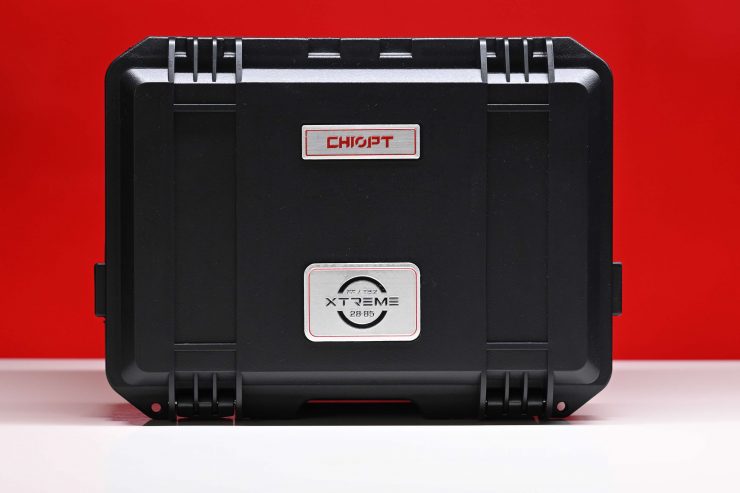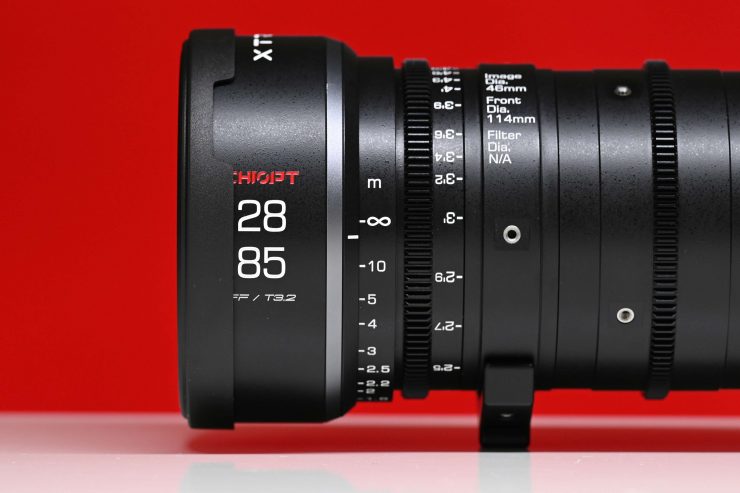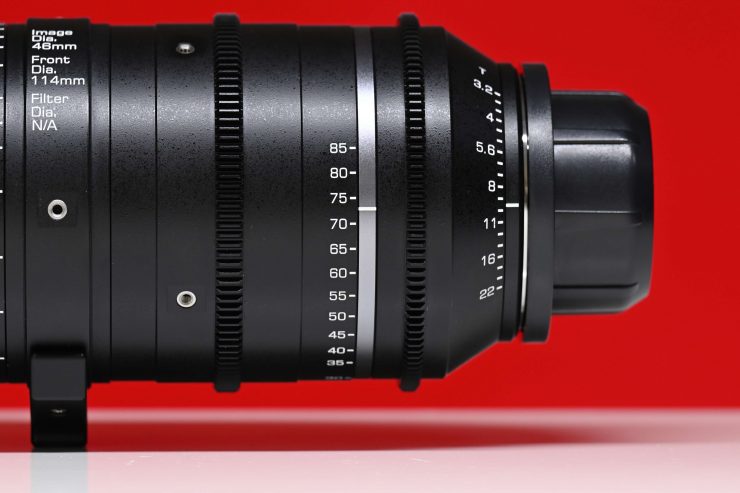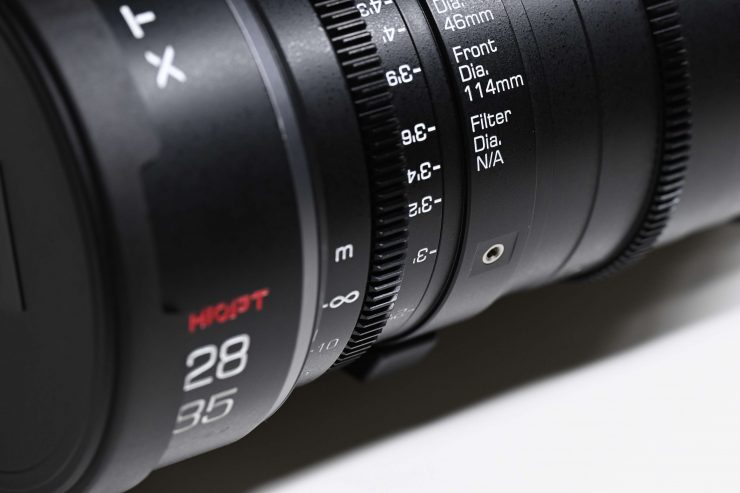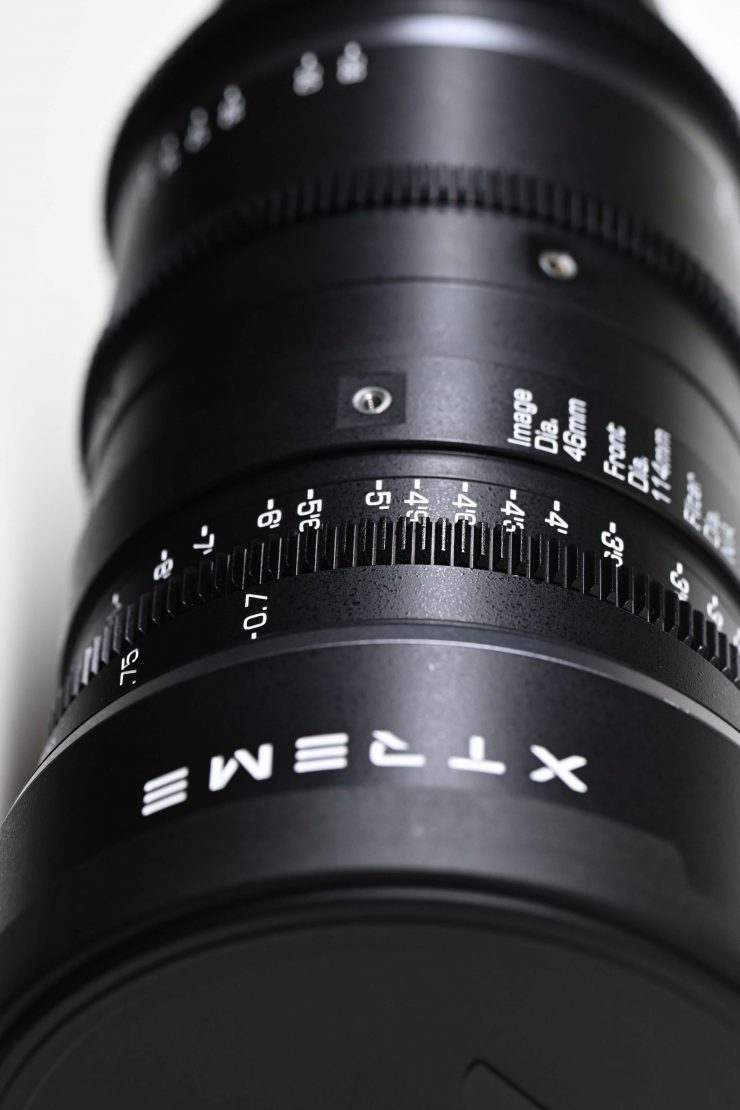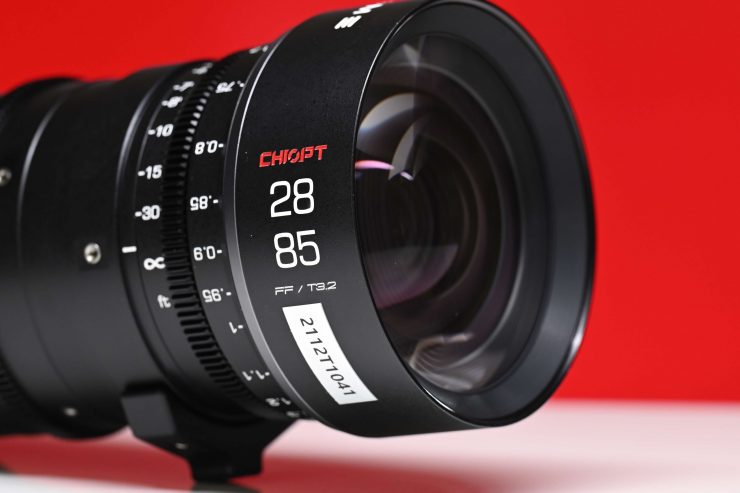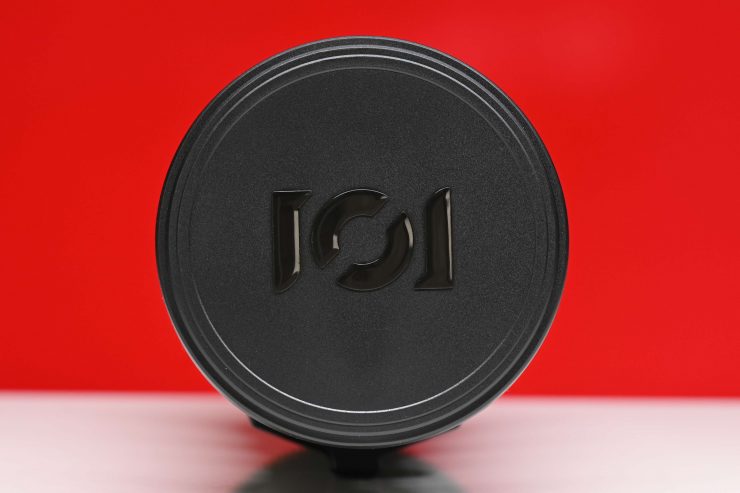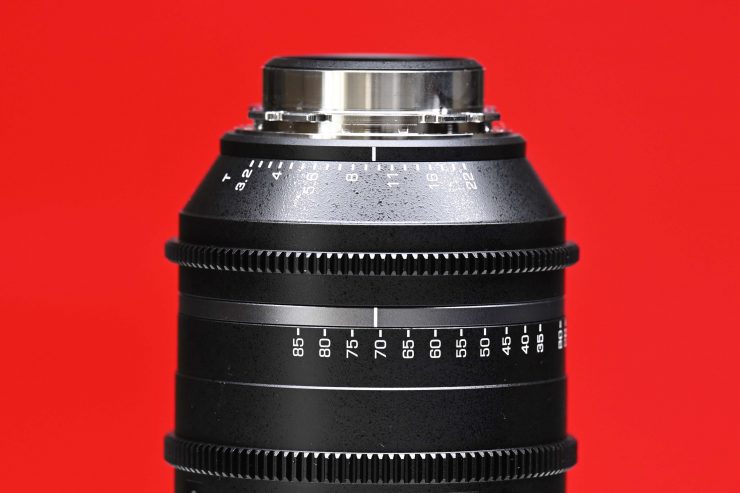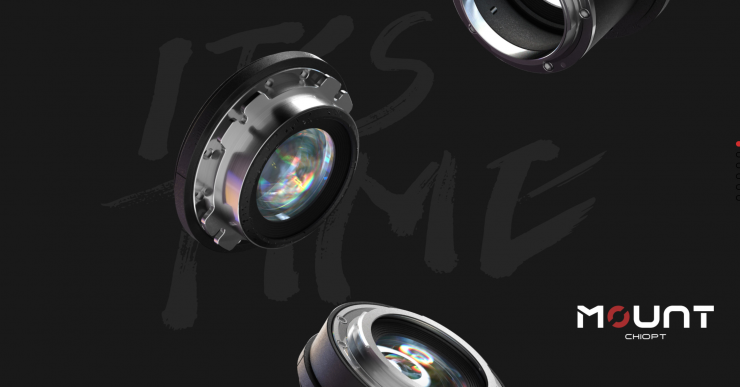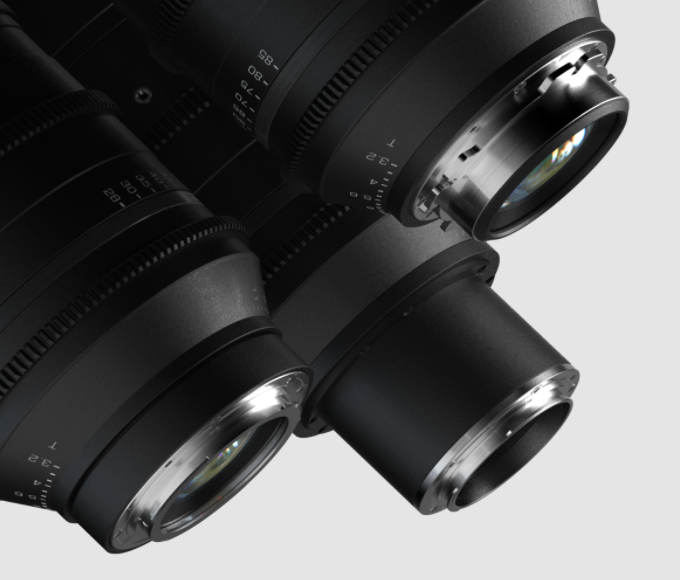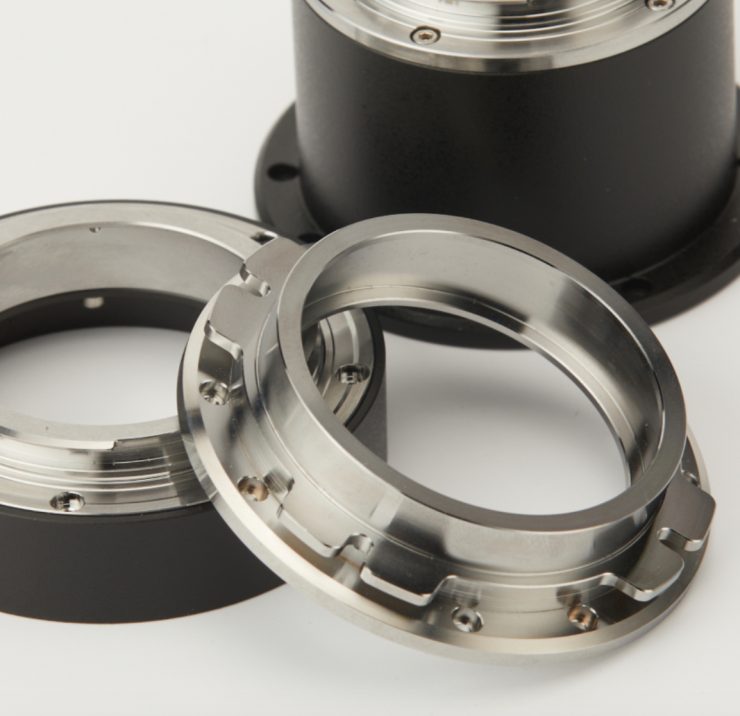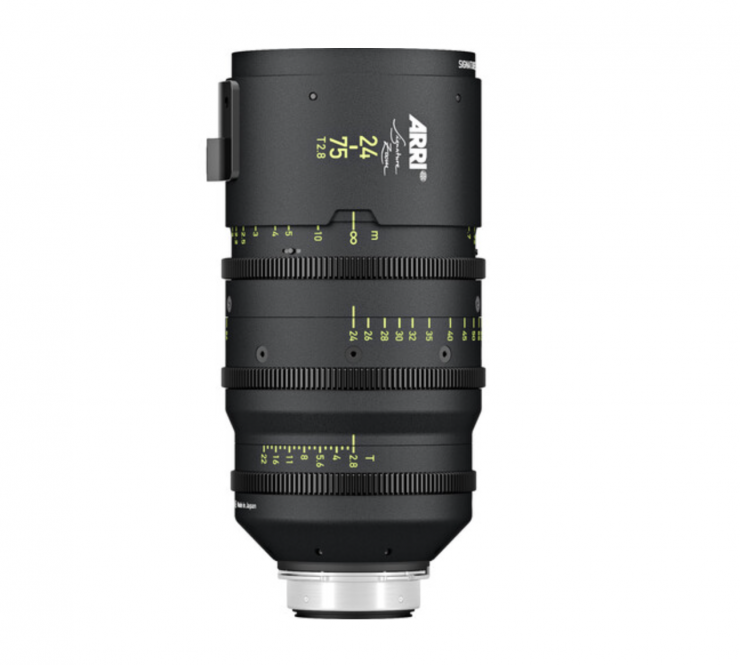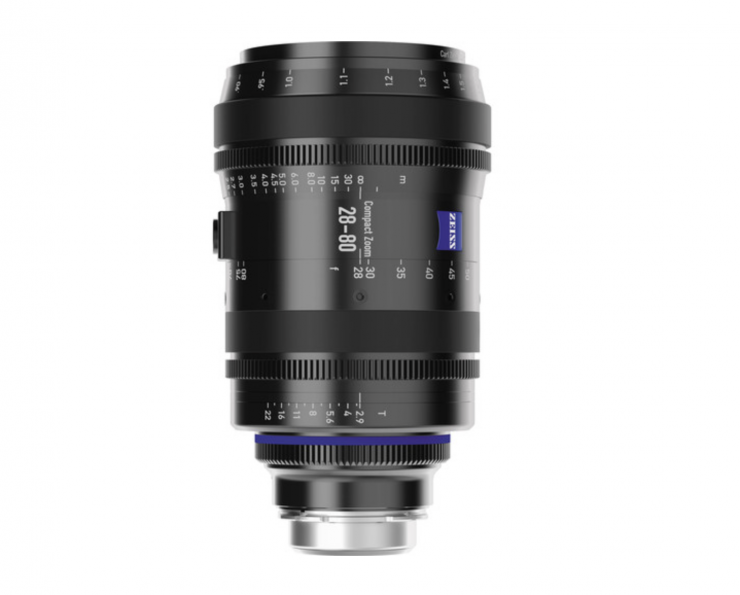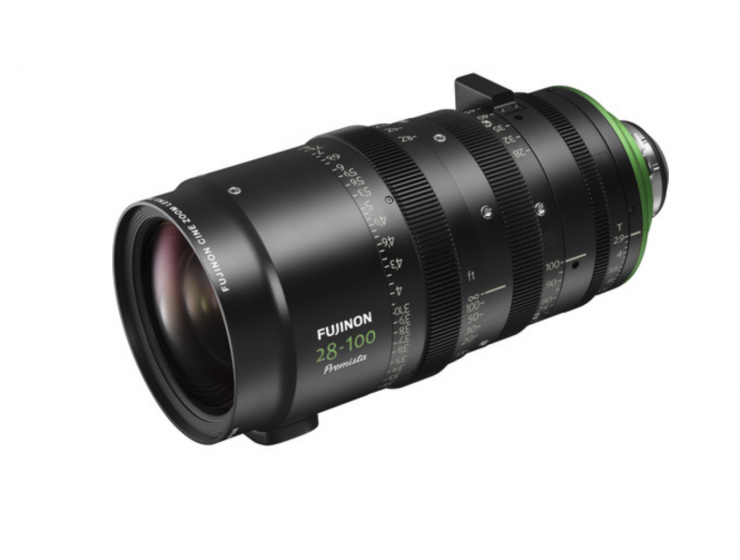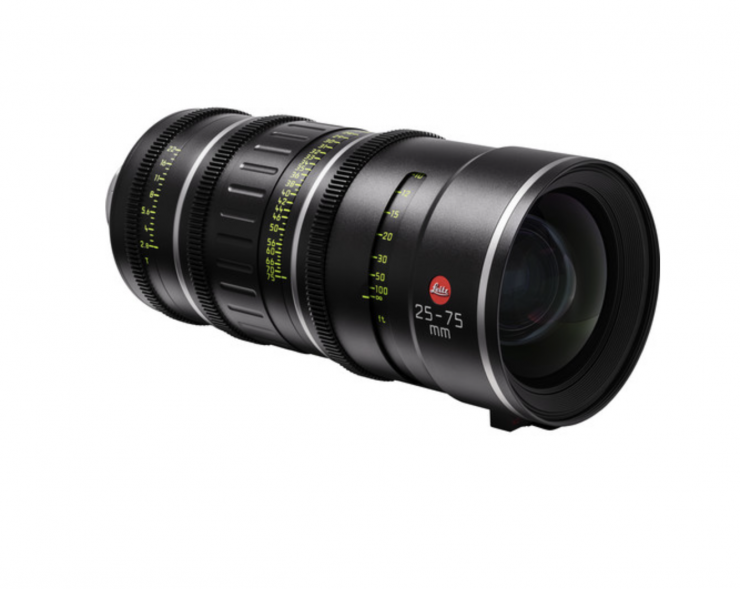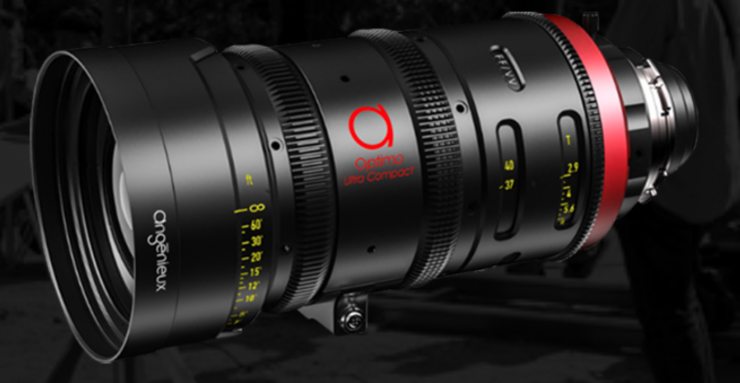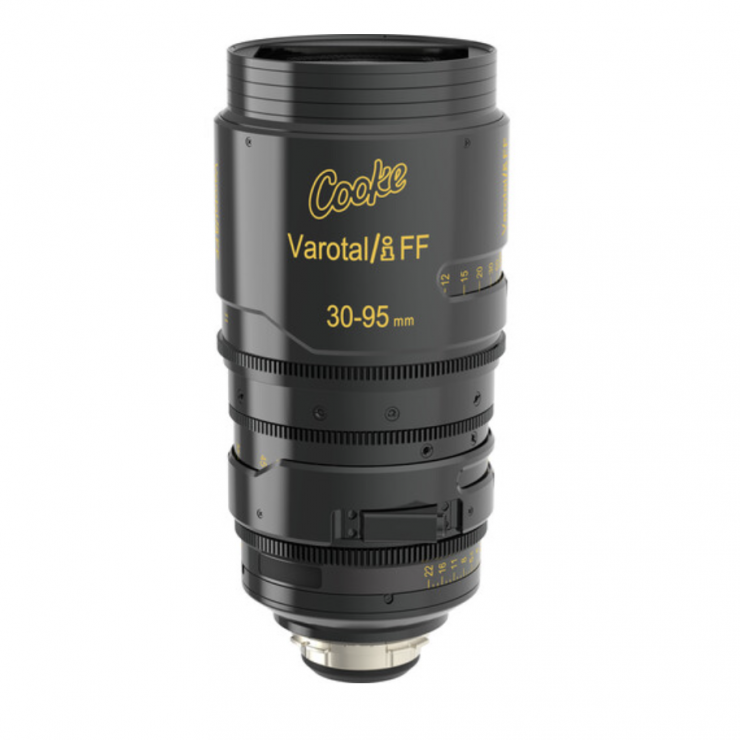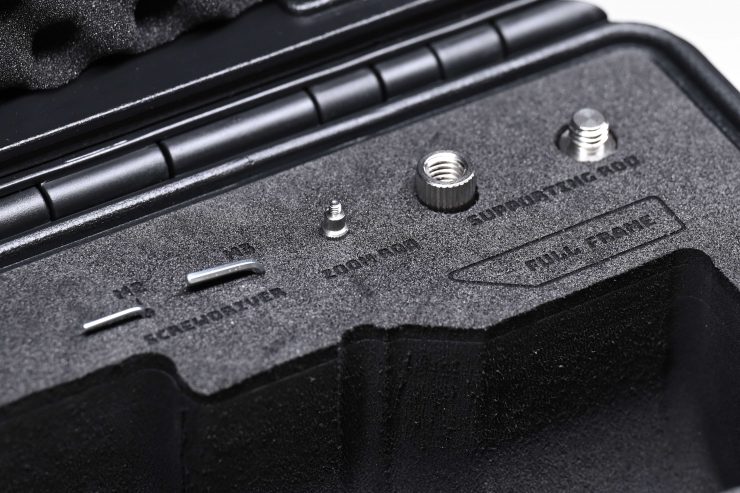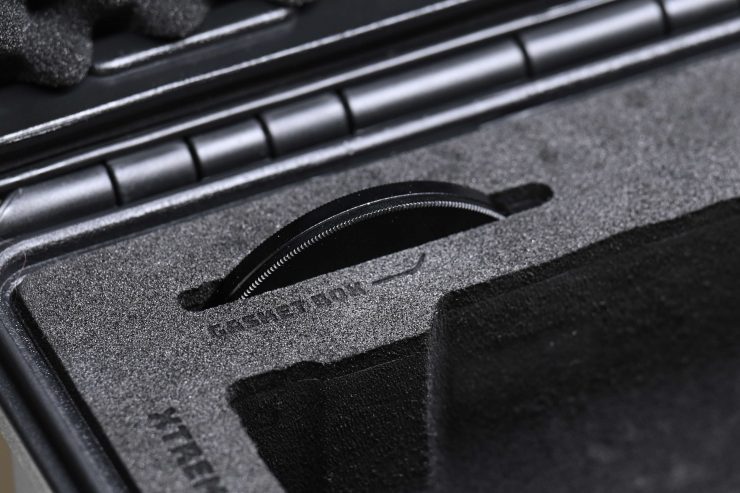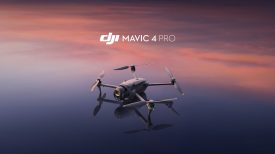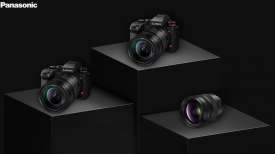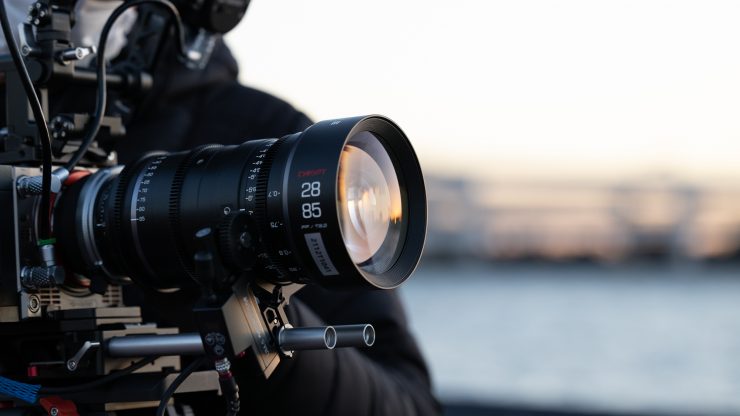
The CHIOPT XTREME Zoom 28-85mm T3.2 is the first lens in a new Xtreme series. Xtreme is a contemporary cinema lens series that will consist of multiple full-frame cinema lenses.
I have been lucky enough to get hold of one to put it through its paces. The lens is currently on a Kickstarter campaign which you can see here.
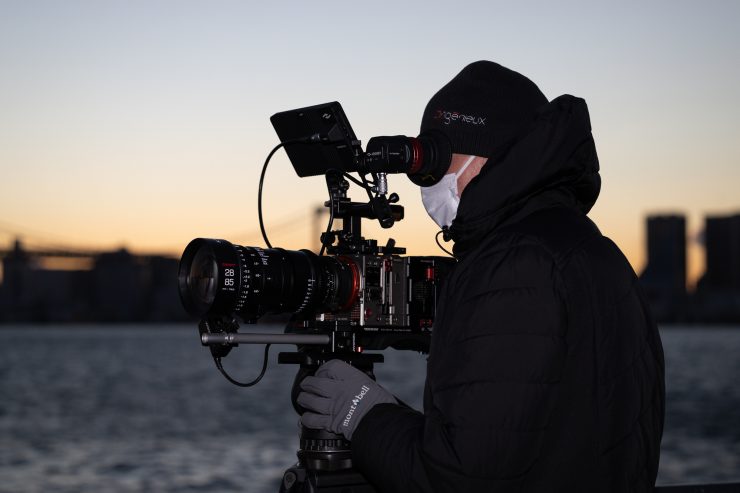
Who is CHIOPT?
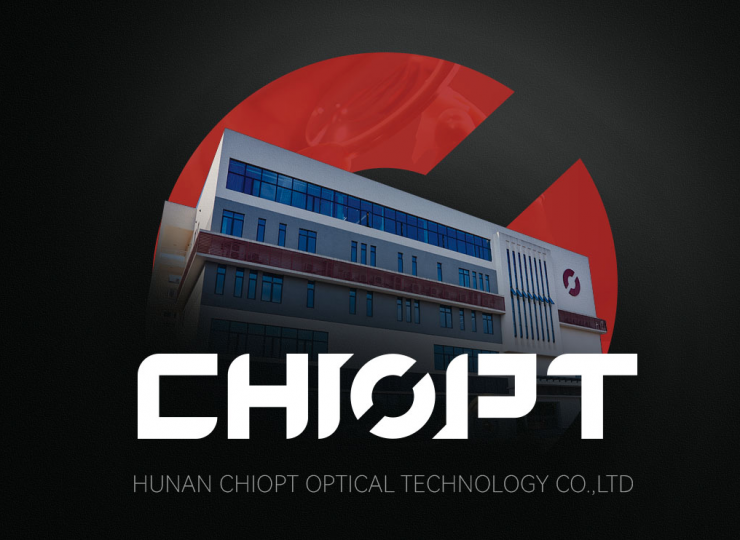
CHIOPT is a Chinese company that has been around since 2012. They mainly specialize in making industrial and security lenses. They have now decided to branch into making cine lenses.
Finally another affordable full-frame Cine zoom
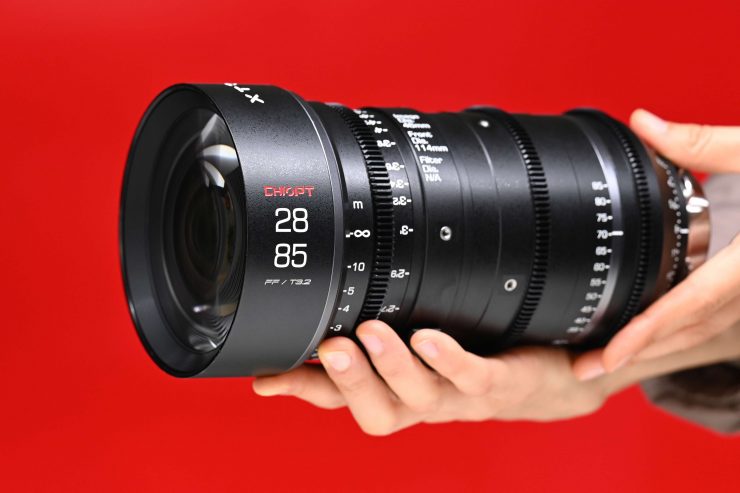
We have seen a few affordable S35 cine zoom lenses come to market, but very few full-frame options. The only other affordable option with this type of focal range that covers full-frame or larger sensors is the new DZOFilm Catta 35-80mm T2.9 Cine Zoom Lens, however, that is currently only available in Sony E-mount.
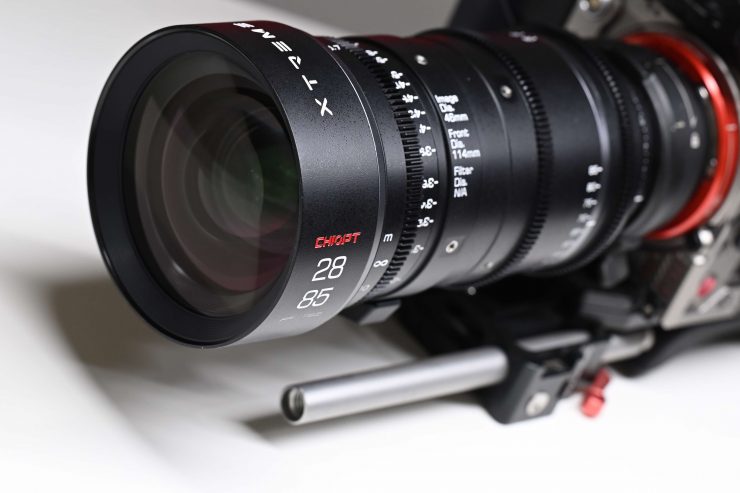
With most cameras coming out having full-frame and larger sensors, there has been a gaping hole in the market for affordable cine zooms. Plenty of affordable full-frame and larger cine primes have come out in the last few years, but it is a lot harder to make a zoom than it is a prime.
Focal Range
One of the biggest caveats of using a full-frame or larger sensor digital cinema camera is that the lenses become larger, heavier, and have reduced focal ranges. This is especially true when it comes to cine zooms that cover large image circles. The CHIOPT has a focal range of 28-85mm, which is reasonably decent given its size and weight.
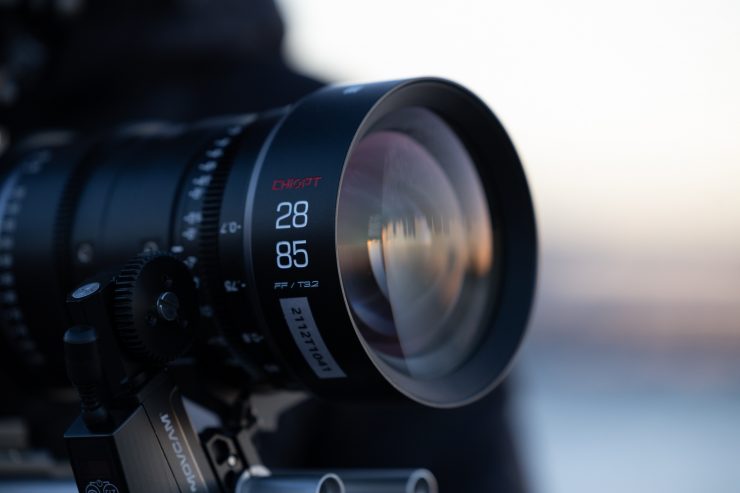
CHIOPT has gone a different direction from DZOFilm which has chosen to make lighter full-frame cine zooms at the expense of increased focal range.
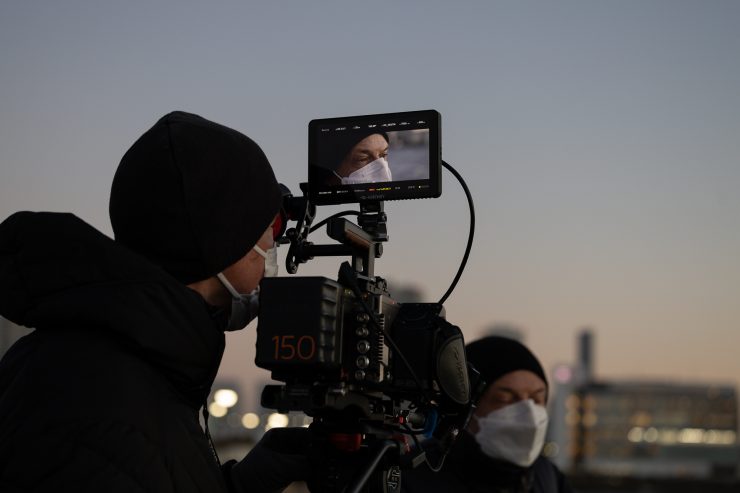
Unfortunately, when it comes to optics you can’t have your cake and eat it too. You simply can’t have a lightweight cine zoom with a decent constant T stop and a big focal range. Yes, you can make your lens housing out of more exotic and expensive materials, but that is going to increase the price while only saving you a handful of weight.
Everyone wants an 18-250mm T2.9 cine zoom that weighs 2.5kg and costs $3,000 USD, well guess what, that is never going to happen. It is always going to be a compromise for lens manufacturers when it comes to weight, size, focal length, and T stop.
Image Coverage
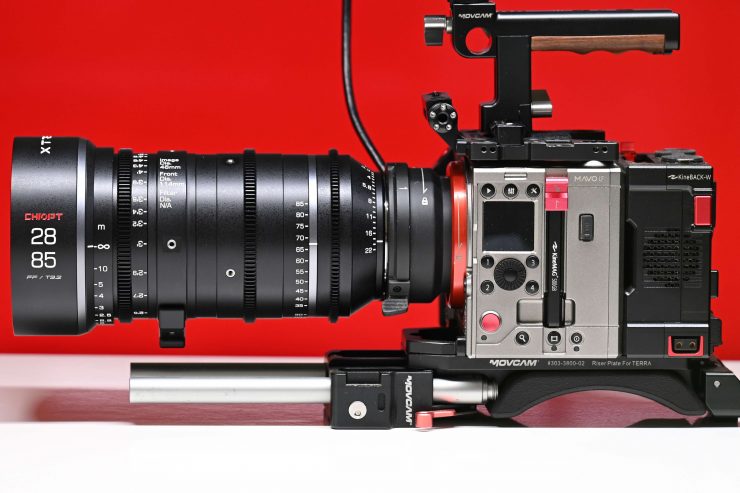
The lens covers image circles of up to 46mm, so it can be used on all of today’s modern digital cinema cameras.
| IMAGE CIRCLE | |
| CHIOPT COMPACT ZOOM 28-85mm T3.2 | 46mm |
| DZOFilm Catta 35-80mm T2.9 | 43.5 mm |
| ARRI 24-75mm T2.8 Signature Zoom | 46mm |
| Angenieux Optimo Ultra Compact 21-56mm T2.9 FF | 46.3mm |
| Angenieux Optimo Ultra Compact 37-102mm T2.9 FF | 46.3mm |
| Leitz Cine Zoom 25-75mm T2.8 | 46.5mm |
| ZEISS 28-80mm T2.9 Compact Zoom CZ.2 | 43.3mm |
| Fujinon Premista 28-100mm T2.9 | 46.3mm |
| Cooke 30-95mm T2.9 Varotal/i Full Frame Zoom Lens | 46.3mm |
Above you can see what the image circle coverage is for some of the other full-frame and greater cine zooms with similar focal lengths.
First Impressions
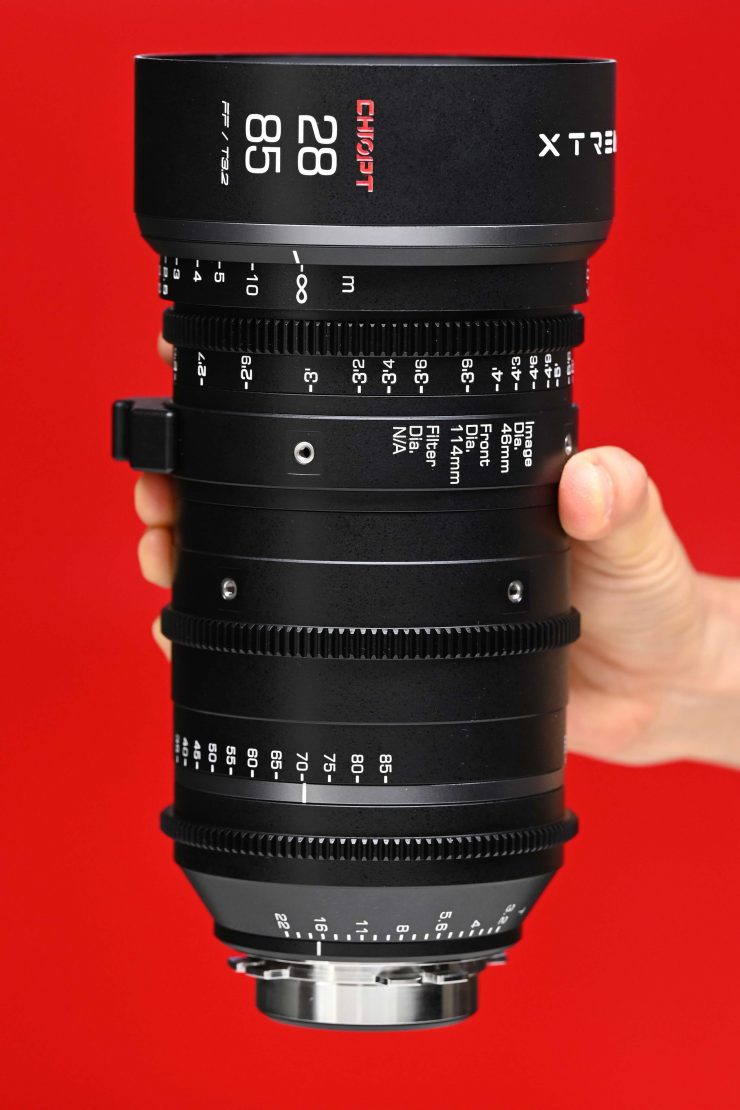
If you are a relatively unknown company and you are going to launch a new product into a sector where people have never heard of you before then you need to make a good first impression.
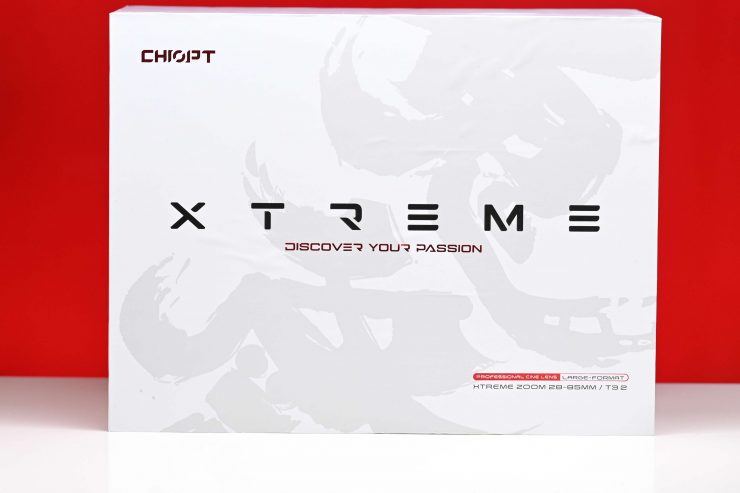
It was nice to see that the lens Chiopt sent out came in a nicely presented box and inside that box was a custom hard case. This was a good start and it shows me that the company is serious about what they are doing.
Size & Weight
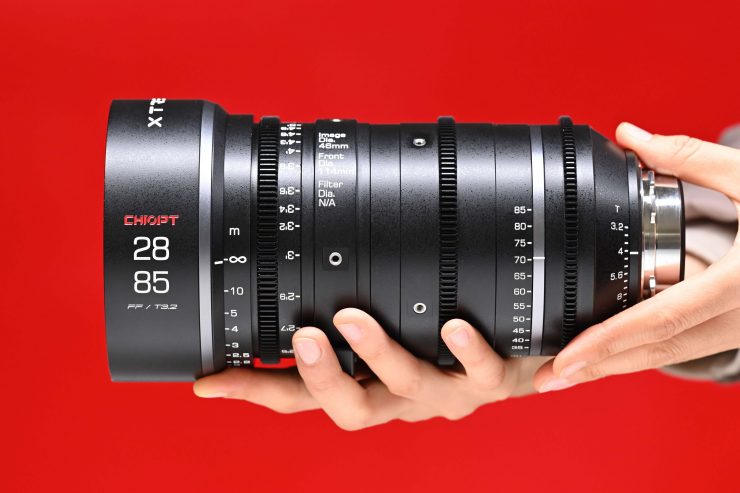
The CHIOPT COMPACT ZOOM 28-85mm/T3.2 tips the scales at 2.7 kg / 5.95 lb (PL Mount). This is not a light lens by any stretch of the imagination, however, as far as full-frame cine zooms lenses go with this focal range and constant T stop it is fairly similar to other available options on the market.
| WEIGHT | |
| CHIOPT COMPACT ZOOM 28-85mm T3.2 | 2.7 kg / 5.95 lbs |
| DZOFilm Catta 35-80mm T2.9 | 1.53 kg / 3.4 lbs |
| ARRI 24-75mm T2.8 Signature Zoom | 4.1 kg / 9 lbs |
| Angenieux Optimo Ultra Compact 21-56mm T2.9 FF | 2.6kg / 5.7 lbs |
| Angenieux Optimo Ultra Compact 37-102mm T2.9 FF | 2.6kg / 5.7 lbs |
| Leitz Cine Zoom 25-75mm T2.8 | 3.72 kg / 8.2 lbs |
| ZEISS 28-80mm T2.9 Compact Zoom CZ.2 | 2.5 kg / 5.5 lbs |
| Fujinon Premista 28-100mm T2.9 | 3.8 kg / 8.38 lbs |
| Cooke 30-95mm T2.9 Varotal/i Full Frame Zoom Lens | 4 kg / 8.8 lb |
Above you can see how the weight compares to other similar focal length cine zooms. The CHIOPT COMPACT ZOOM 28-85mm T3.2 weigh about as much as a Zeiss 28-80mm T2.9 or Angenieux Optimo Ultra-Compact FF, but quite a bit more than the DZOFilm Catta.
Build Quality
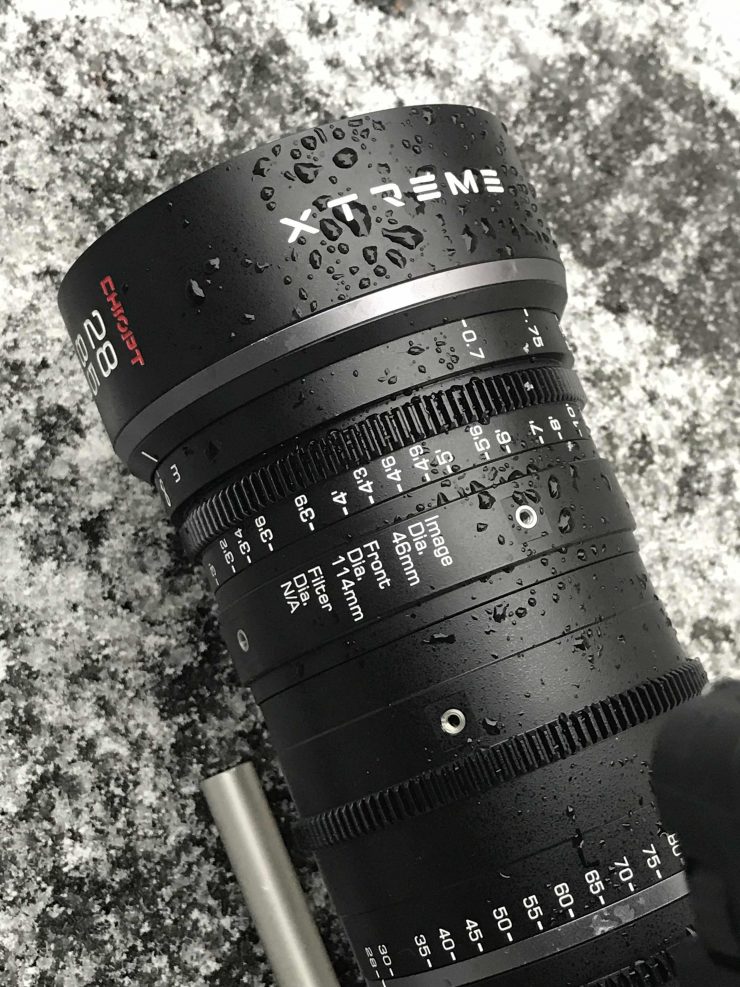
It is always hard to know what to expect with a new lens from a company you haven’t heard of before. The CHIOPT COMPACT ZOOM 28-85mm T3.2 is very well made and constructed. The outside of the lens casing is a hard metal and it has been designed in a matte black finish to avoid light reflecting off it.
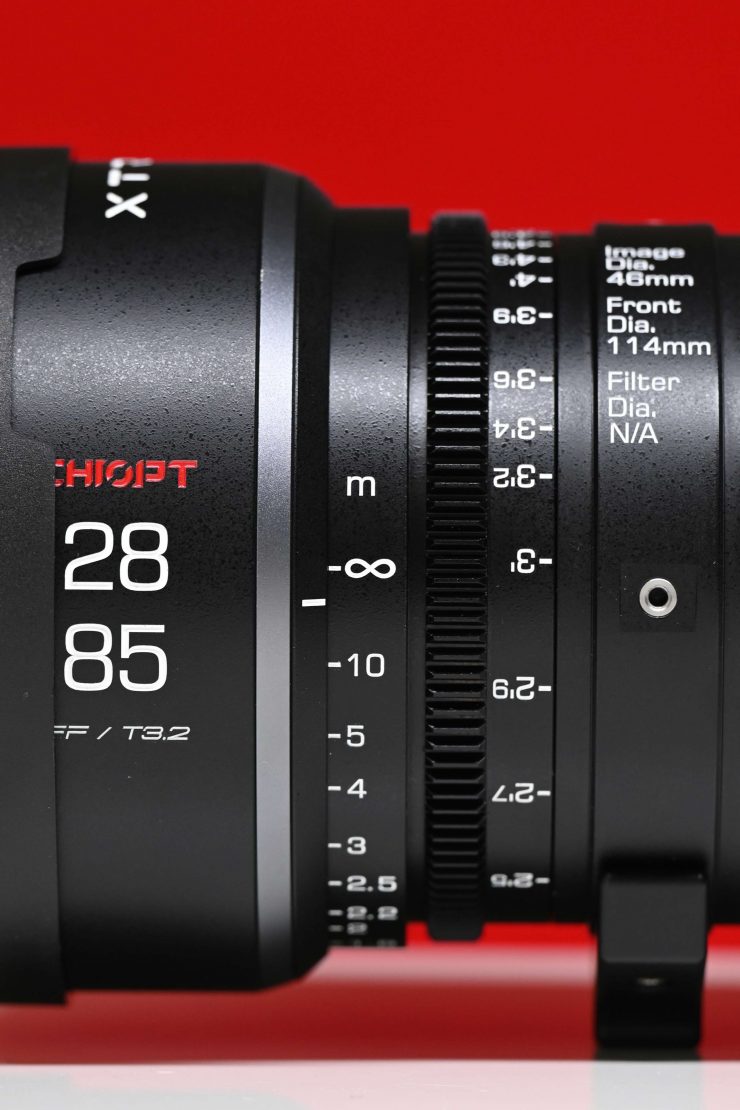
The focus ring is nicely weighted and the operation is very smooth. The focus rotation is 288-degrees which is a slightly odd number, however, it is so close to 300 degrees that I doubt most operators could tell the difference. If you are pulling focus by hand you will find it virtually impossible to go from the minimum focus to the maximum focus point, but this is true of most cine primes and zooms.
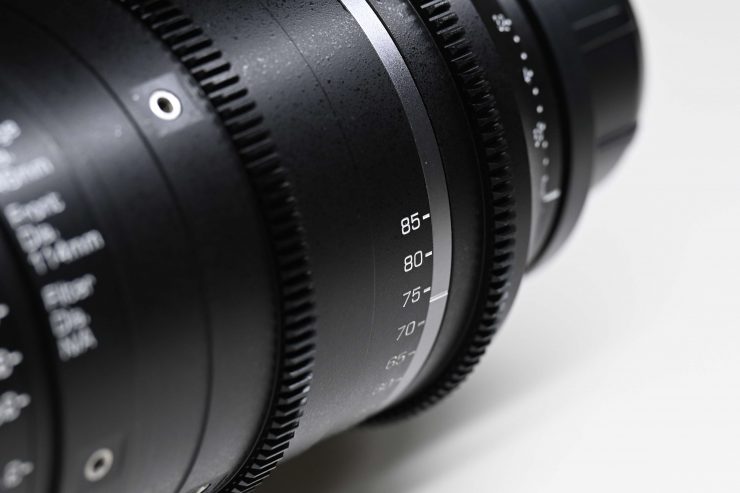
The zoom ring is more heavily dampened than the focus ring but this is fairly common with cine zooms because you don’t necessarily want to accidentally bump the focal range.
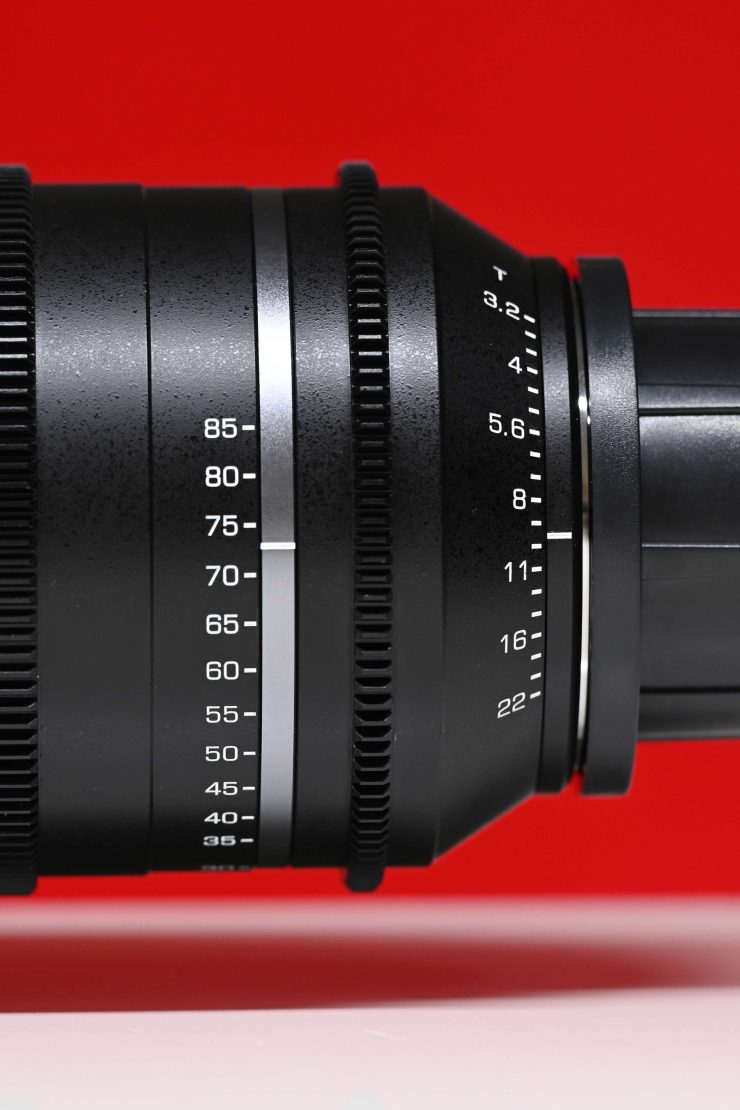
The iris is nicely weighted and I found it easy to use.
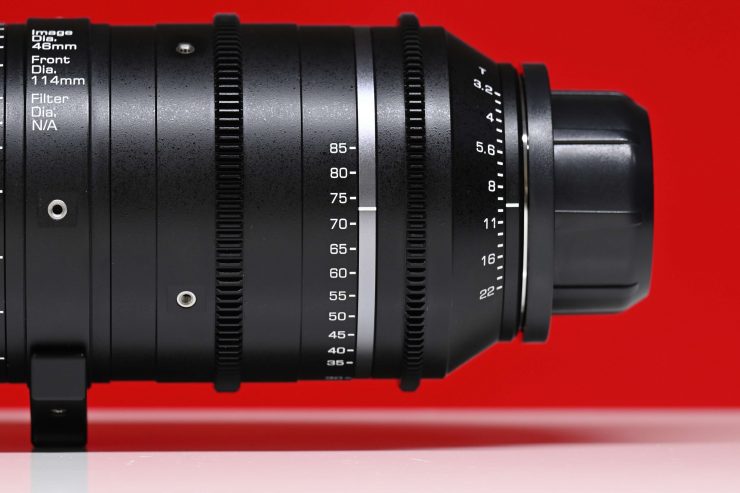
There is a built-in lens support adapter that takes a 1/4-20″ thread.
Optical Design
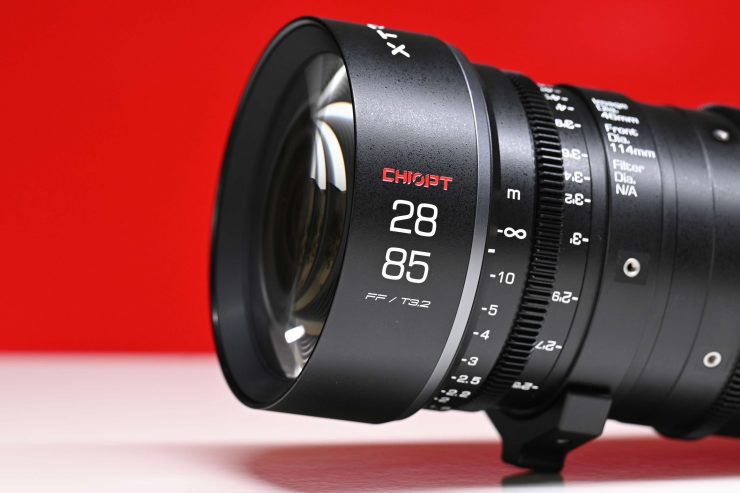
Chiopt doesn’t list how many groups and elements are in the optical design. The lens has 9 aperture blades.
Other Features
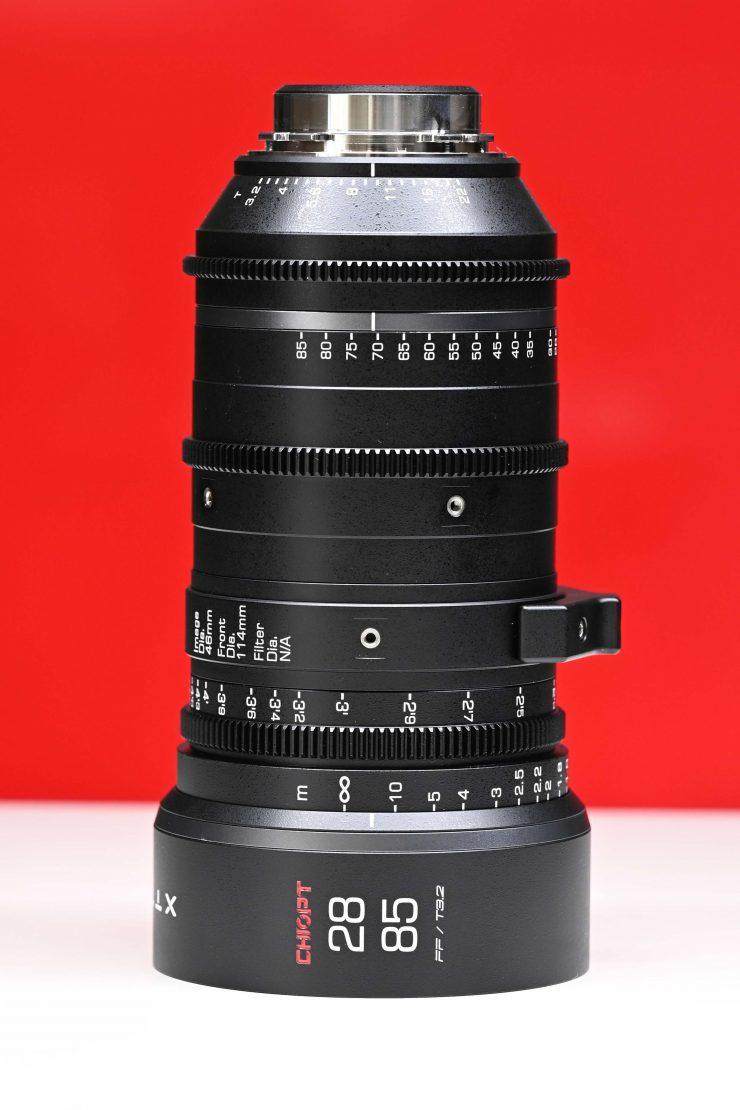
The lens is claimed to feature a parfocal design and well-controlled breathing. The minimum focusing distance from the front of the lens is 40cm (1.31′). The front lens diameter is 114mm.
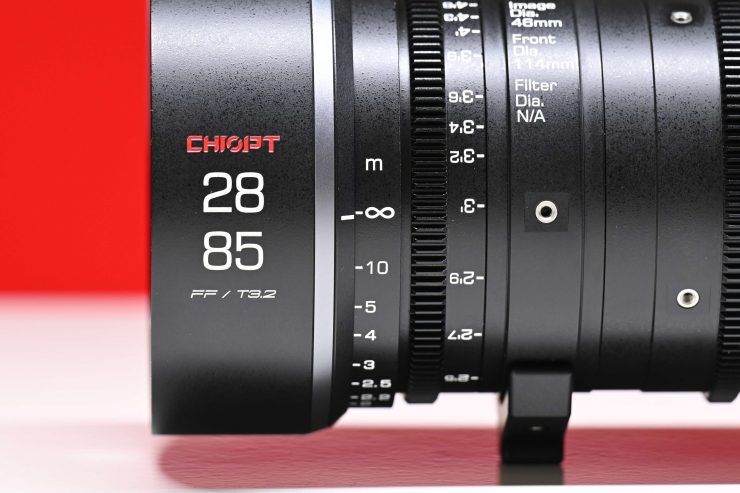

Operators side 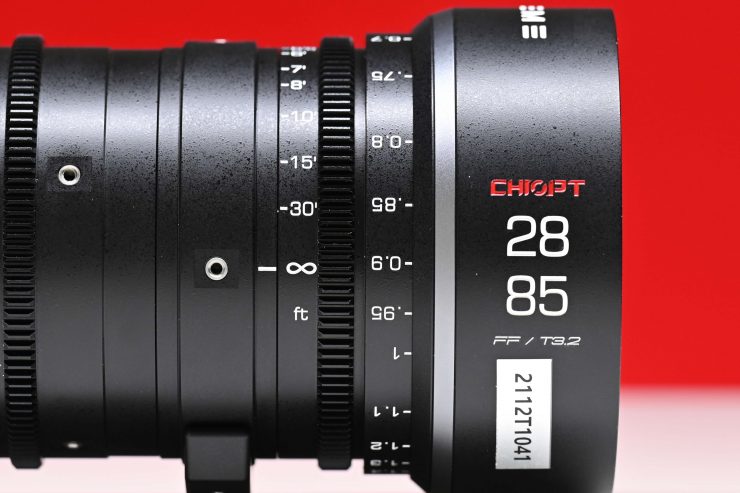
Assistants side
Instead of making two different versions of the 28-85mm T3.2, CHIOPT has placed the metric scale on the left side of the focus ring, and the imperial scale on the right side. This is a little strange and something that DZOFilm also does with its Catta zooms.
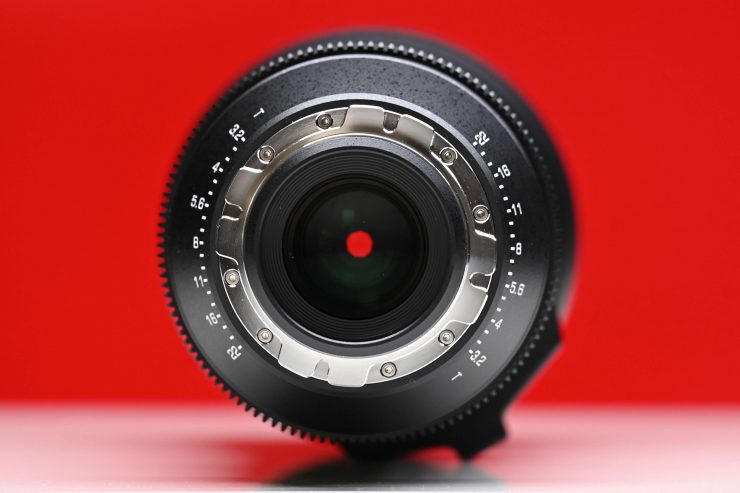
A PL native mount is standard, but there are also Canon EF and Sony E mounts available. CHIOPT states that other mounts will also be available in the future.
Is the lens design based on something else?
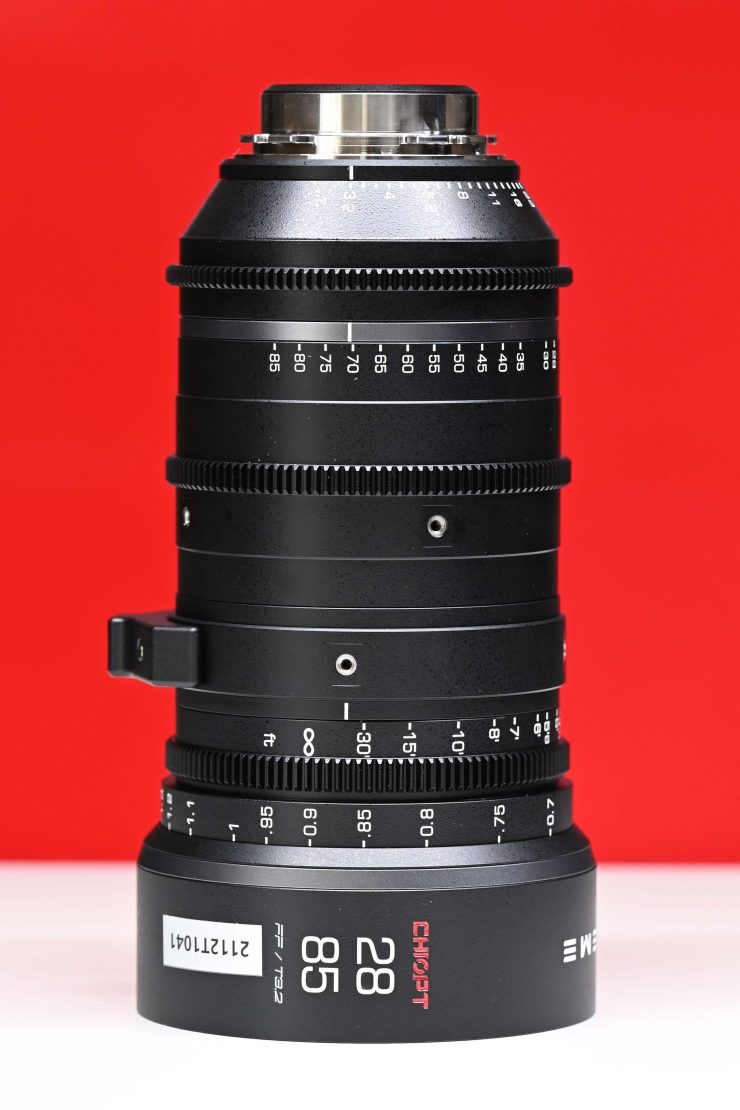
Could this just be something like the Vivitar 28-85mm f/2.8-3.8 Canon FD-Mount Manual Focus Zoom Lens that has been rehoused? Or Nikon AI Zoom Nikkor 28-85mm F3.5-4.5S? When I asked CHIOPT this question they told me that the lens was entirely designed and manufactured by CHIOPT. The XTREME is based on a T3.2 constant aperture design and it features an internal zoom structure.
The lens is parfocal from my testing. It maintains focus regardless of the focal length.
No Breathing?
I tested out the lens by doing large focus throws, and while there is a very small amount of breathing, it is very well contained. A personally don’t like focus breathing as it can be very distracting. It is good to see a budget friendly cine zoom with minimal lens breathing.
No lens technically has zero breathing, but very good cinema glass has such minimal amounts that it is virtually impossible to see. What you will normally see is some perspective shift which is normal when refocusing a lens.
Image shift is the change in location of a fixed point after a focus rack. It should be in the same spot after you rack focus.
Perspective shift is the focal length of the lens being modified by the movement of the optics. A slight change in focal length may happen if there is a floating element that moves and is not properly corrected for in the design. Certainly, the great majority of lenses have this issue. It’s also tenths of a mm so not overly noticeable.
Focus breathing is a change in image size so the size of the object will get larger as it moves out of frame. That is reproduction size.
In summary, perspective shift is the effective focal length change (angle of view change) and focus shift is the reproduction size of the object changing as focus moves. Think of it like Macro. A macro lens can be 1:1 life-size reproduction but as you focus it can change the reproduction size. That is focus shift from intentional breathing design. The angle of view is not overly affected in that case because it is flat field focus. On spherical lenses, the angle of view does change slightly as you focus rack thus making for perspective/angle of view shift.
Fall off, Image Coverage & Vignetting
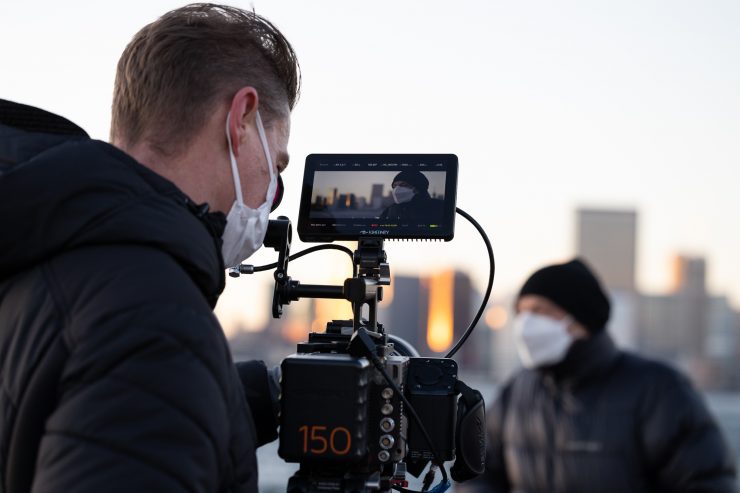
As the lens covers a 46.7mm image circle, when you use it on a full-frame-sized sensor you get very good illumination across the entire image.
I didn’t see any vignetting when shooting 6K 17:9 full-frame on the Kinefinity MAVO LF.
Sharpness
The growing trend that is common with a lot of the affordable cine zooms and primes these days is to come up with something that is a little more vintage, and that sometimes comes at the expense of sharpness. I was curious to see if the CHIOPT followed that trend. Above you can see how the lens performs when used at various T stops at 85mm.
The lens is not that sharp when used at T3.2 and T4. From my testing, I personally found the lens to be a little too soft when used wide open at T3.2 and the lens seems to exhibit a lot of halation. At T4, it does improve, but it was still a little soft. Sharpness definitely improves once you start stopping down and you really need to use this lens at T5.6 and above if you want sharp results. In saying that, some shooters actually like that softer look and they may find the look of this lens to their liking.
Above you can see how the lens performs when used at various T stops at 28mm.
I found that at 28mm the lens was a lot sharper than when you use it at 85mm, especially at T3.2 and T4. Once you start stopping the lens down sharpness does improve as you would expect.
Above you can see how the lens performs when used at various T stops at 55mm. At 55mm it is not as sharp as it is at 28mm. Wide-open at T3.2 it is a little soft, but not as soft as when it is used at 85mm. I personally think it was still usable at T3.2. It improves at T4, and once you start stopping the lens down.
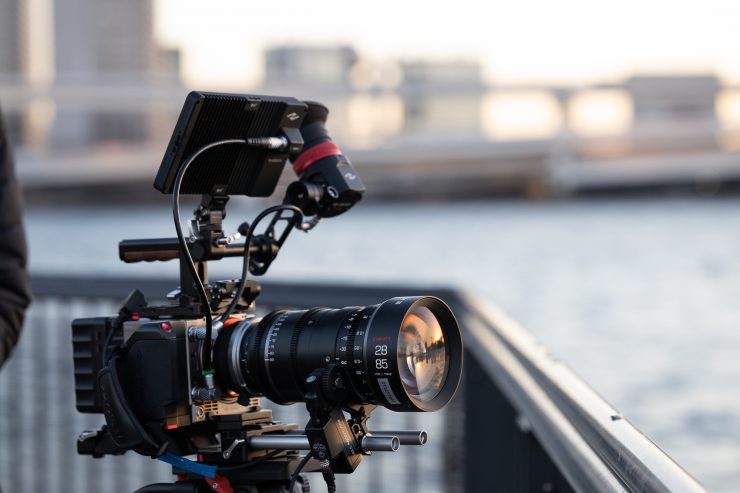
From my tests, I found that the lens is certainly a lot sharper at wide focal lengths. At mid to longer focal lengths the lens is certainly softer, especially when used wide open. I reached out to CHIOPT to ask about the lens being soft at longer focal lengths and they told me that they are aware of that issue.
Lens Flare
The lens is capable of producing some interesting flares, especially when used wide open. Above you can see what it looks like when used at 85mm.
Above you can see what the lens flare looks like at 28mm.
Above you can see some more shots with the lens to show how it flares @T3.2. It does tend to do some strange things when shooting bright sources such as the sun. I found that you end up with this diffused circle that some people may or may not like.
Lens flare is very much a personal thing and whether you like the flares this lens produces only you will know.
Chromatic Aberration
The lens doesn’t have a lot of real-world visible chromatic aberration. If you zoom into the image by 300% when used wide open at T3.2 you can see a small amount of color fringing on reflective surfaces and over-exposed areas. The small amount of chromatic aberration is impressive for a lens at this price.
Bokeh
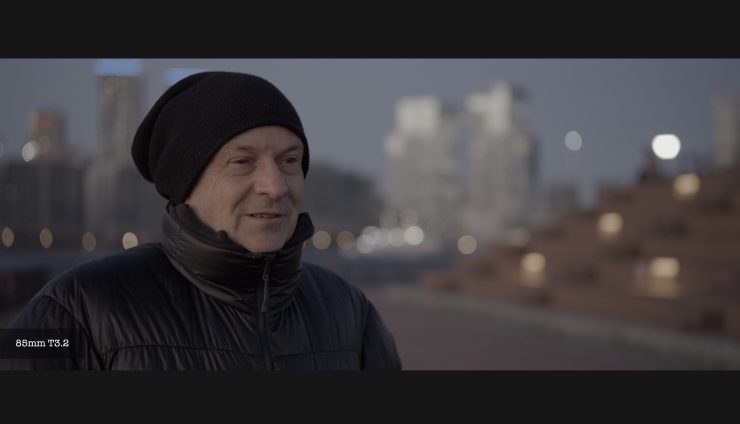
Nice bokeh is something everybody craves. The bokeh produced is reasonably round and there are no signs of onion rings. I personally didn’t find the fall-off to be that pleasing. It goes from in focus to out of focus very abruptly. Again, this is just my personal opinion. You may think otherwise.
Distortion
I did find that the lens has some barrel distortion at wider focal lengths. At 28mm it is fairly noticeable. If you look at the edges of the frame you can see how straight lines are bending.
Color Tone
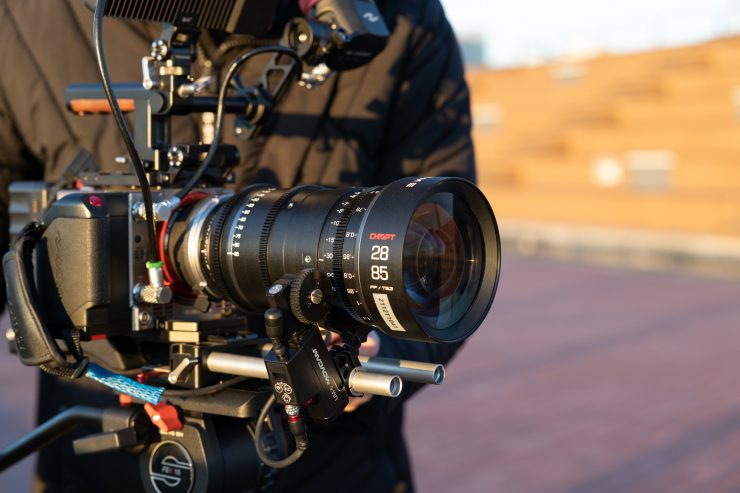
The CHIOPT XTREME zoom 28-85mm T3.2 is fairly neutral when it comes to the color tone. It may lean a little more towards cooler tones, but I wouldn’t say it is as cool as a Zeiss. The lens isn’t too clinical, especially when used wide open. What look you actually prefer from a lens is entirely going to come down to personal choice.
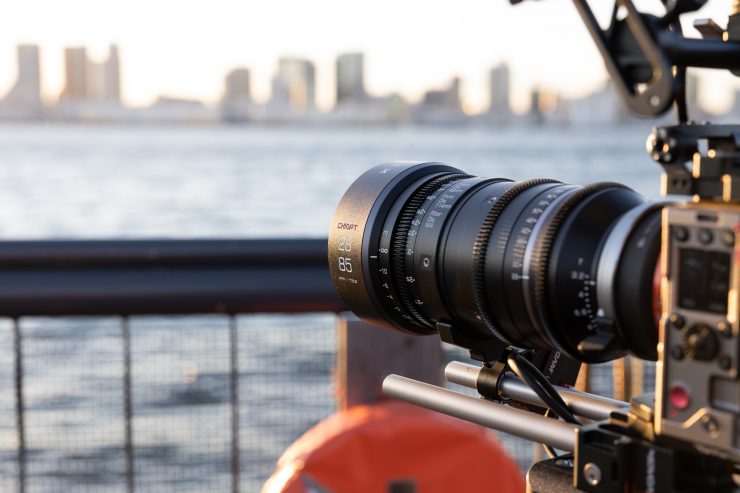
The color tone of a lens is really something you should look at closely if you are going to be using both prime and zoom lenses from different manufacturers. Certain prime and zoom lenses work better together than others. What will work for you will also depend on what camera you are using.
Real World Thoughts
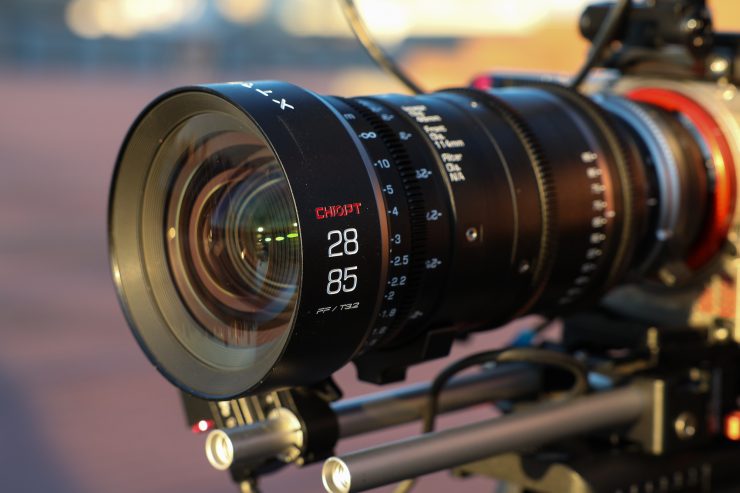
The CHIOPT 28-85mm T3.2 is a well-made full-frame cine zoom that would be right at home on cameras such as the Sony FX6, FX9, VENICE, RED V-Raptor, ARRI ALEXA Mini LF, Canon C500 Mark II, Kinefinity MAVO LF, EDGE, etc.
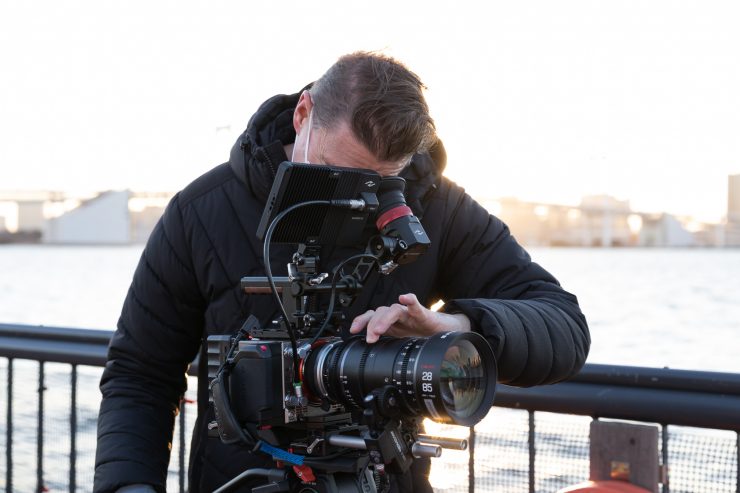
I went and took some shots with the lens and a Kinefinity MAVO LF to see how it performed in the real world.
Above you can see some footage captured with the lens. I was primarily wanting to see what it looked like at various focal lengths, the focus breathing, the bokeh, barrel distortion, and if it could be used wide open. I haven’t added any sharpness in post so you can see exactly what you get.
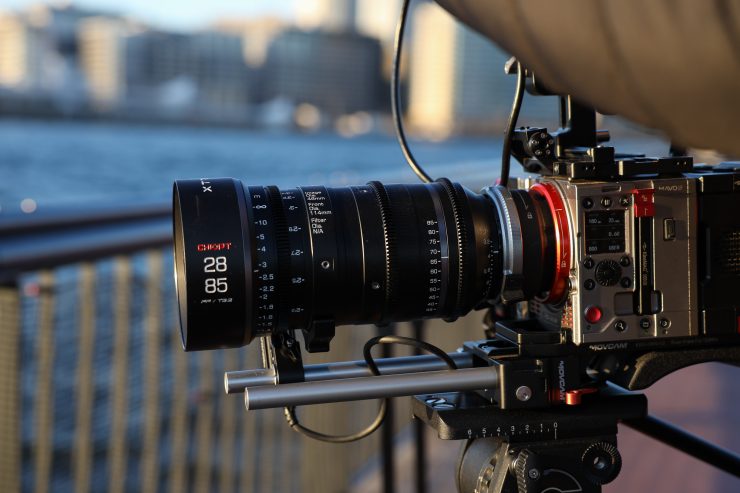
The lens is nice to operate and use, and the mechanics are good for a lens at this price.
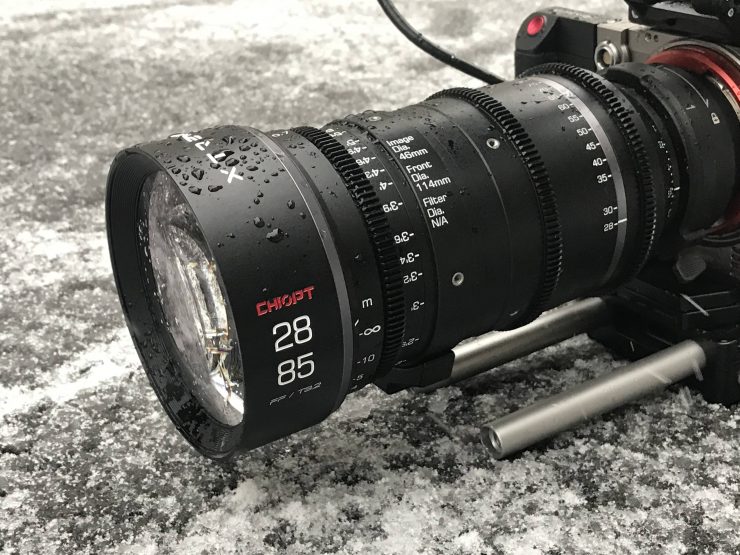
The overall optical performance of this lens is pretty decent, but it is quite soft when used wide open at longer focal lengths. I personally wouldn’t want to shoot HD resolutions with this lens.
Distortion can be a bit of an issue when you use the lens at its wider focal lengths, but there are no real-world signs of any chromatic aberration. There is some breathing, but it is fairly well contained. The lens produces nice bokeh and it represents good value for money.
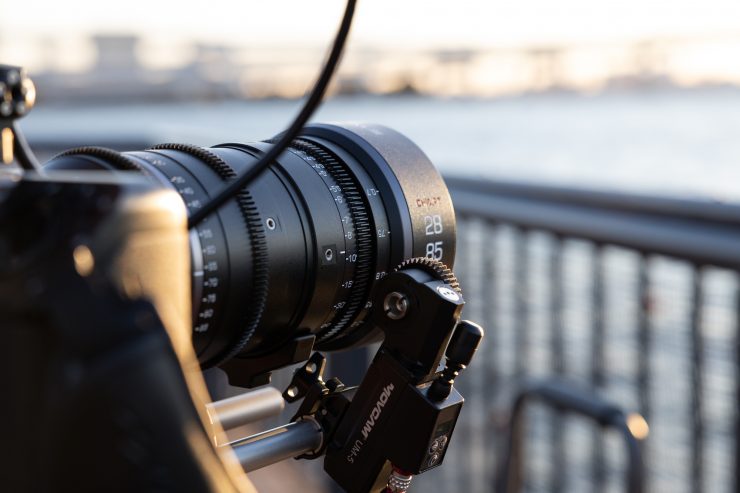
What I also noticed is that the lens support is in a pretty bad position when you are trying to attach a remote wireless follow focus motor. It is very difficult to tighten up the clamp that goes onto the 15mm rods as it ends up hitting the lens support. This may not be the case with all motors, but it was something that was an issue with the motor I was using. On some motors, you can switch the pitch gear to the other side of the motor which could help rectify this issue.
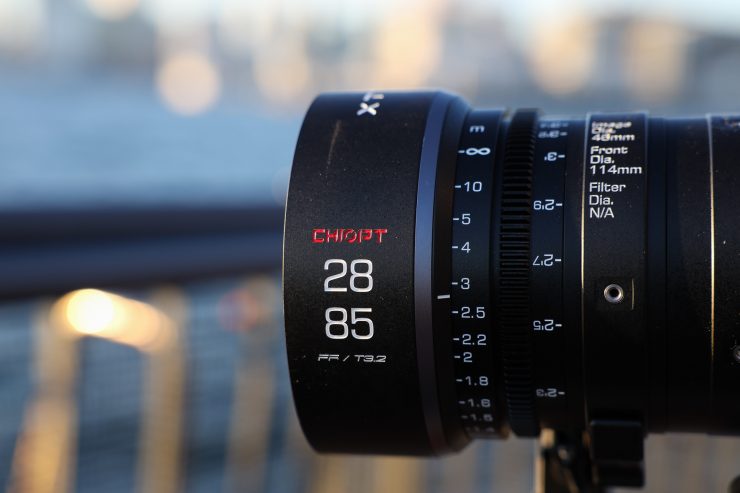
The biggest problem CHIOPT will initially face is that they are a relatively unknown company and they haven’t made cine lenses before. Without having previous brand recognition it will be hard to convince potential customers to buy your product. The other issue is that they currently only have one lens available, however, more are on the way. In saying that, you should never judge a book by its cover and you should always judge a product on its merits and not based on a brand name.
Specifications
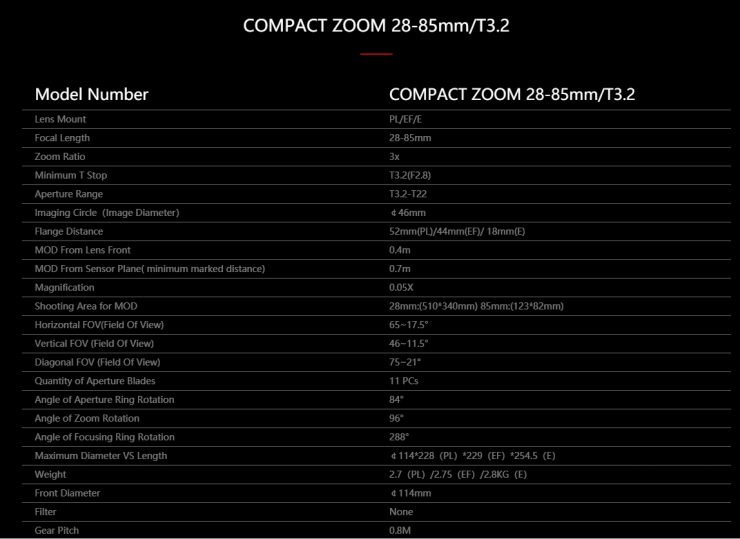
Other Options
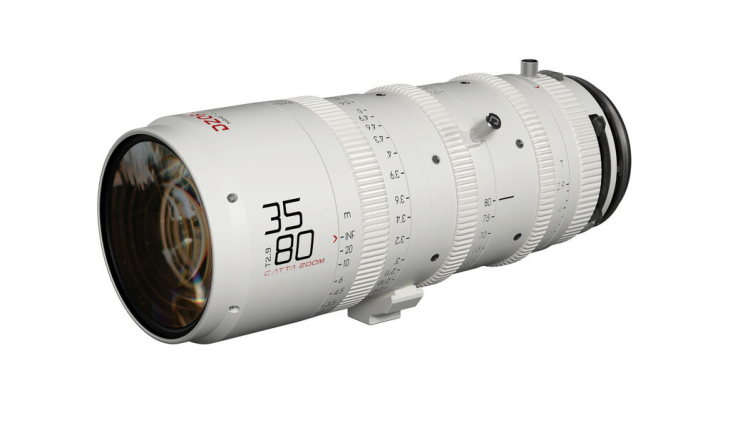
The lenses with the closest focal range to this lens would be the DZOFilm Catta 35-80mm T2.9, ZEISS 28-80mm T2.9 Compact Zoom CZ.2, ARRI 24-75mm T2.8 Signature Zoom, Fujinon Premista 28-100mm T2.9, Leitz Cine Zoom 25-75mm T2.8, Angenieux 37-102mm T2.9 or 21-56mm T2.9, and Cooke 30-95mm T2.9 Varotal/i Full Frame Zoom Lens.
Price & Availability
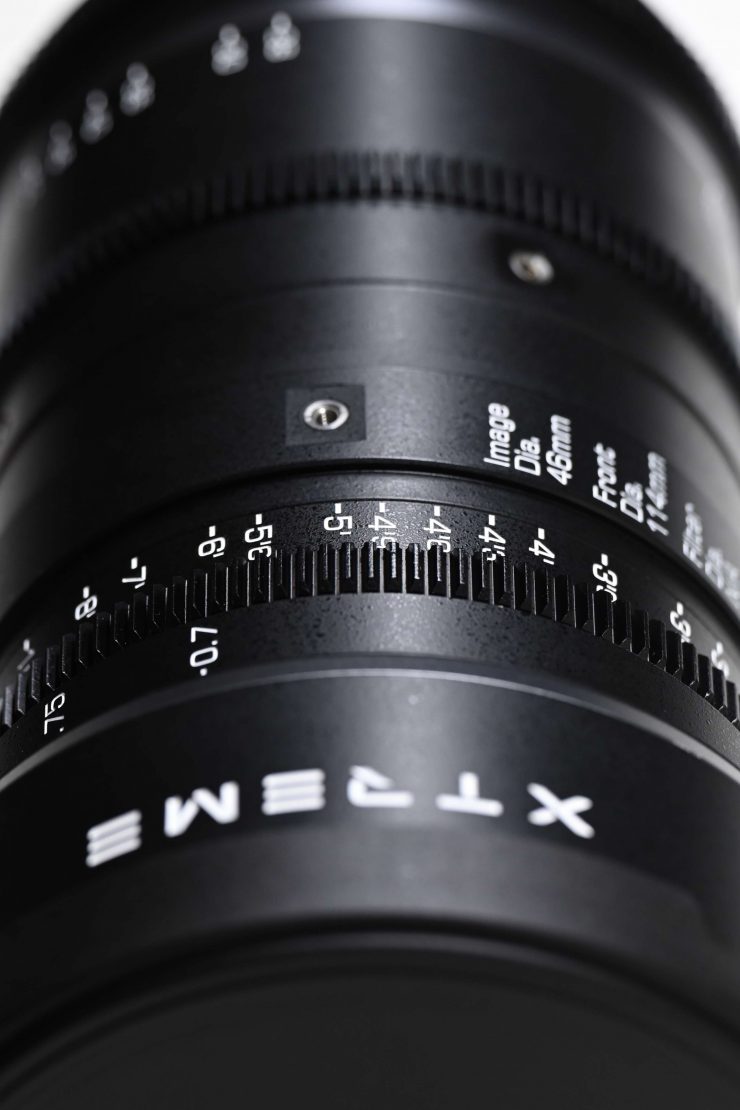
The CHIOPT Compact Zoom 28-85mm T3.2 will retail for $2899 USD which makes it incredibly good value for money. It will be officially announced on the 15th of February.
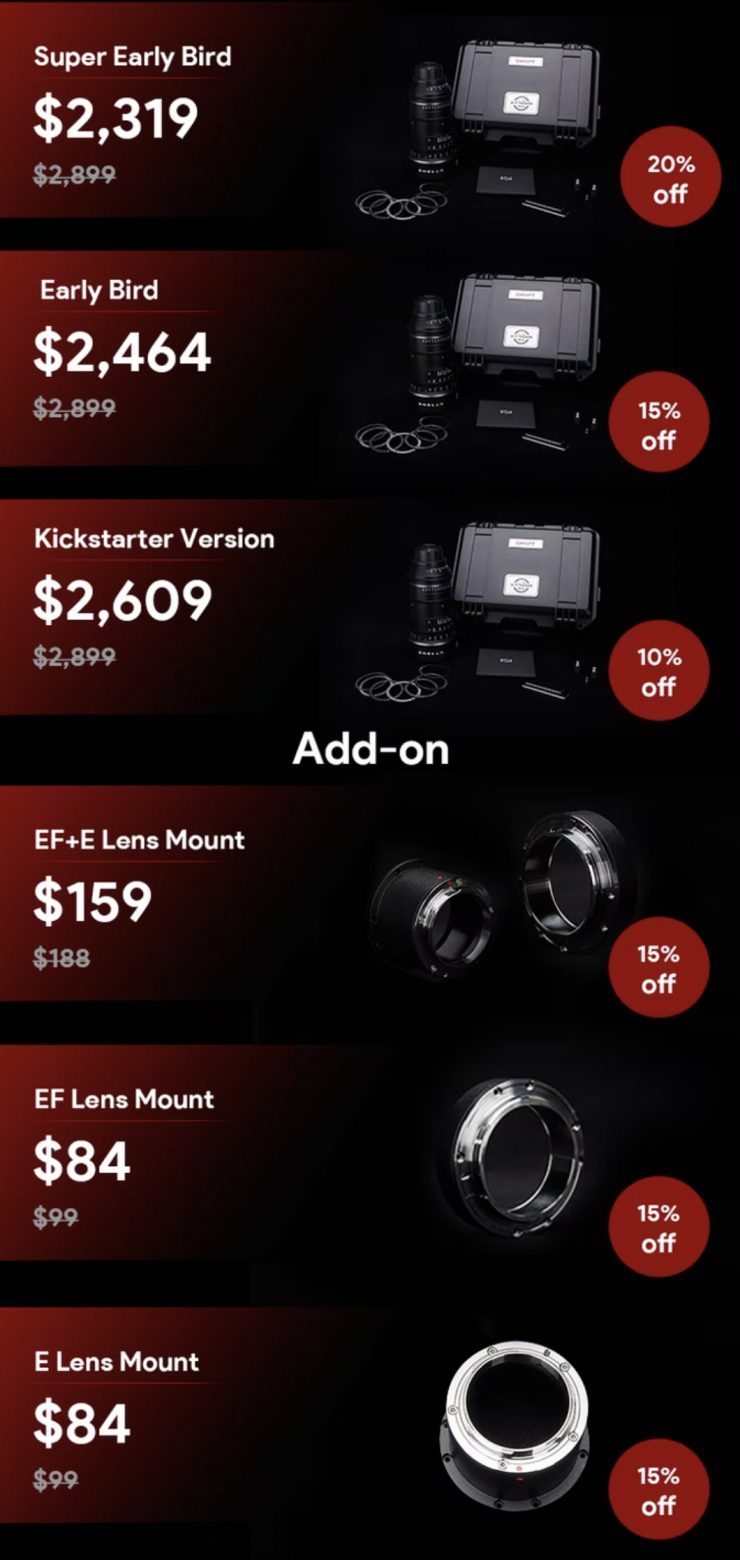
UPDATE: The lens is now available to purchase on Kickstarter for a considerable discount. Above you can see the early bird deals available on Kickstarter.
| PRICE | |
| CHIOPT XTREME Zoom 28-85mm T3.2 | $2,899 USD* |
| DZOFilm Catta 35-80mm T2.9 | $3,099 USD |
| ARRI 24-75mm T2.8 Signature Zoom | $49,550 USD |
| Angenieux Optimo Ultra Compact 21-56mm T2.9 FF | NA |
| Angenieux Optimo Ultra Compact 37-102mm T2.9 FF | NA |
| Leitz Cine Zoom 25-75mm T2.8 | $51,000 USD |
| ZEISS 28-80mm T2.9 Compact Zoom CZ.2 | $21,945 USD |
| Fujinon Premista 28-100mm T2.9 | $42,900 USD |
| Cooke 30-95mm T2.9 Varotal/i Full Frame Zoom Lens | $53,900 USD |
* Retail price. It is currently on Kickstarter for 20% less.
Above you can see what full-frame cine zooms with a similar focal range cost. The CHIOPT has certainly been priced to compete directly with the DZOFilm Catta 35-80mm T2.9. What is important to note is that the DZO is only currently available in Sony E mount and the PL version of the lens is likely to cost more.
What do you get?
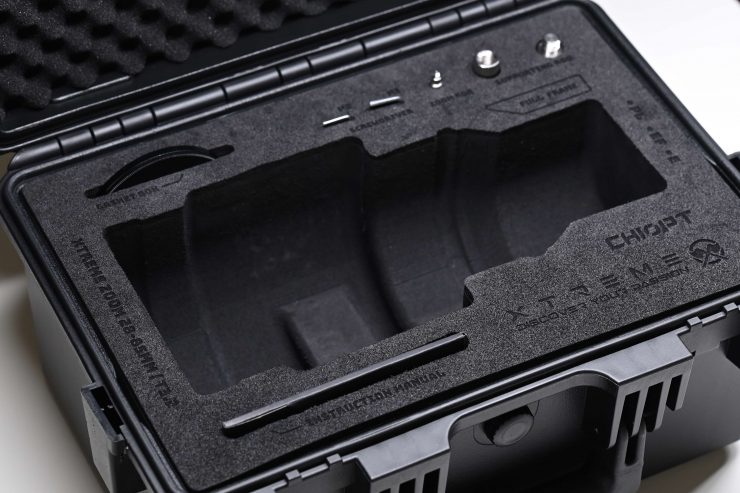
The lens comes in a nice custom hard case and inside you get the lens, a set of shims, an M3 hexagon wrench, an M2 hexagon wrench, a zoom rod, and two supporting screws for the foot.
More Lenses are coming
CHIOPT also has plans to release a 75-250mm T3.2 full-frame zoom as well as 24/35/50/75/100/135mm primes. The 75-250mm sounds like a very interesting lens, but at this stage, I have no idea how large and heavy that lens will be.
Conclusion
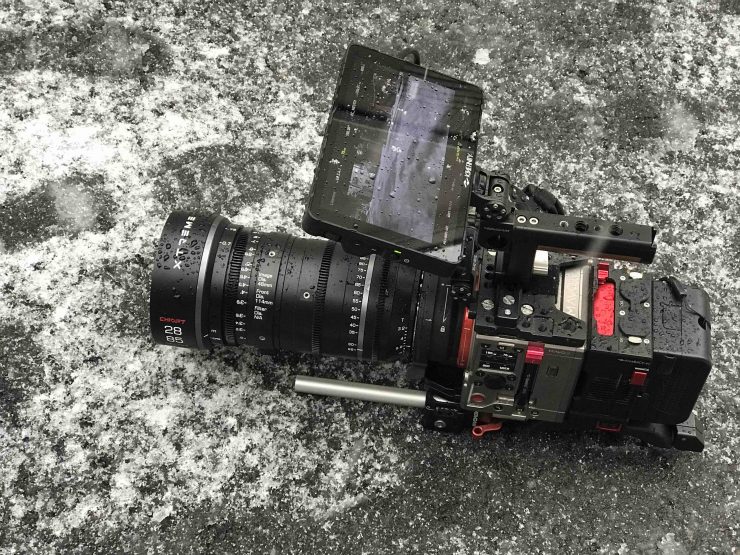
The CHIOPT XTREME 28-85mm T3.2 is a good option if you are looking for a solidly made full-frame cine zoom with a decent focal range. Yes, the lens isn’t optically perfect, but that is always going to be the case with the majority of budget-friendly cine zooms.
The lens could be sharper, especially when used wide open at longer focal lengths and you do get barrel distortion at the wider end of the focal range. On the positive side, the mechanics of the lens are excellent and it has minimal focus breathing and real-world chromatic aberration.
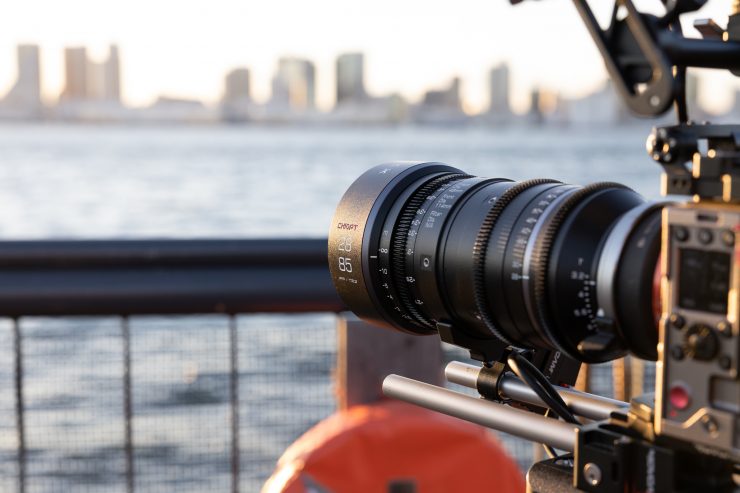
The lens is a lot heavier than say a DZOFilm Catta 35-80mm T2.9, and that could be an issue for some users of smaller-sized full-frame cinema cameras. In my opinion, the CHIOPT has a much more usable zoom range than the DZOFilm, but that does come at the expense of weight and physical size.
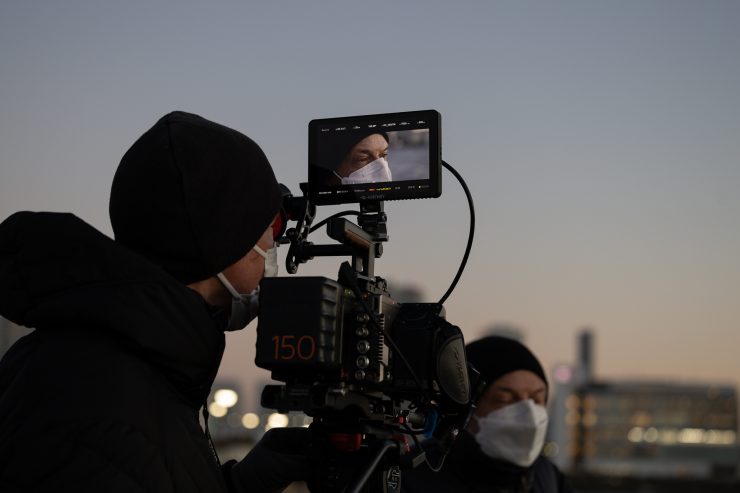
It is good to see more competition in the affordable full-frame cine zoom space. If you are an owner/operator, lenses such as the CHIOPT XTREME Zoom 28-85mm T3.2 make a lot of sense. They won’t empty your wallet and they provide decent results. No, they aren’t going to offer the same optical quality as more expensive offerings, but they still get the job done for far less money and that is their biggest appeal.

